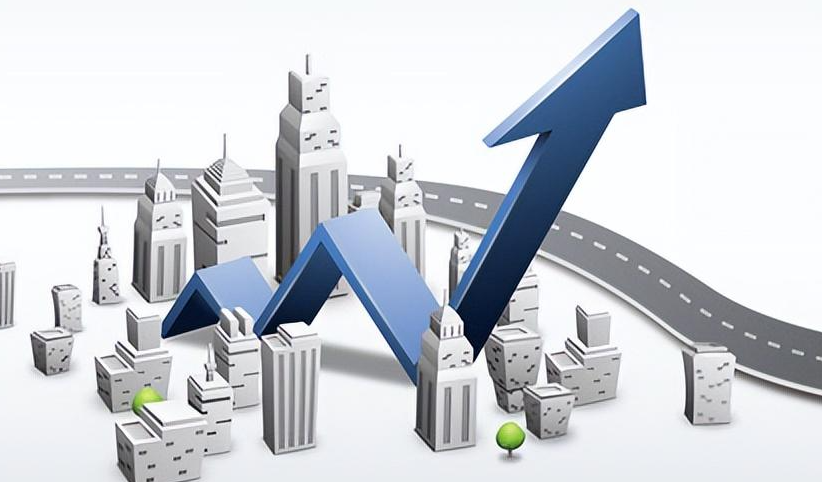This metric surged by 184%.
Advertisements
The so-called “Buffett Indicator” has sparked considerable concern among investors and analysts alike, as it has reached alarming levels not seen in the past two years. This metric, which is cherished by legendary investor Warren Buffett, indicates that the stock market is currently riding a wave of exuberance that might soon come crashing down. Latest reports reveal that the Buffett Indicator has hit a staggering 184%, suggesting an inflated valuation for U.S. stocks, potentially setting the stage for a significant market downturn.
Warren Buffett, whose purchasing prowess is legendary, famously cautioned that investing in stocks when this indicator approaches 200% is akin to "playing with fire." Historically, when this gauge recorded peak levels, it has provided strong forewarnings of an impending market crash. Skepticism is on the rise as many investors reflect on these signals, especially as they might lead to ripple effects throughout the entire financial ecosystem.
Moreover, the market dynamics in the U.S. financial landscape are undergoing a noteworthy transformation. The recent surge in hedge fund-type exchange-traded funds (ETFs) signifies a diminishing barrier between institutional investors and the general public. These ETFs, particularly designed for active management, have quickly amassed over $15 million, allowing everyday investors access to strategies once reserved for affluent stakeholders.
Adding to the somber mood of Wall Street, major U.S. stock indexes closed lower, with the Dow Jones falling by 0.41%, the S&P 500 dipping 0.31%, and the Nasdaq closing down 0.27%. While tech giants like Microsoft and Meta witnessed declines exceeding 1%, a few exceptions included Tesla, which experienced a minor uptick of over 1%, alongside slight increases in Nvidia and Amazon's stocks.
The alarming rise of the Buffett Indicator generates substantial apprehension regarding the potential overvaluation of stocks. It is imperative to understand the metrics behind this indicator, which compares the total market capitalization of active U.S. stocks (represented by the Wilshire 5000 Index) relative to the latest quarterly Gross Domestic Product (GDP) figures.
As of now, with the Wilshire 5000 standing at an unprecedented total market value of approximately $51.47 trillion — an increase of 9% this year, while GDP recorded $27.94 trillion last quarter — the current ratio of 184% vividly highlights the steep market valuations plaguing the U.S. economy.
Buffett has suggested that a ratio nearing 100% indicates fair valuation levels, while a range between 70% and 80% might signal a bargain market. His stern warning about the potential risks entailed when approaching the 200% mark remains echoingly relevant as market watchers brace for a possible retracement.

The historical performance of this indicator has been stark — it presaged a harsh downturn in early 2022. The time frame saw the S&P 500 and Nasdaq Composite indices plummet by 19% and 33%, respectively, after the indicator breached the 200% threshold.
It is also critical to note that Buffett has publicly embraced this indicator, calling it "the best single measure of valuation levels" at any given moment. However, with Berkshire Hathaway’s cash and cash equivalents soaring to an all-time high of $167.6 billion by the end of 2023, a palpable unease over available investments pervades the market.
Famed for his investing acumen, Buffett's sentiments resonate with a broader wave of caution emerging from Wall Street, particularly with John's Hussman and B. Riley Wealth Management dealing firm heads sounding alarms about the escalating “Buffett Indicator” as proof of the bubbling stock market — one that could lead to a sharp rupture.
Additionally, Capital Group’s Andy Budden pointed out concerns regarding a "mild bubble" swirling around tech stocks, prompting some traders to lighten their positions in high-flyers. Furthermore, Jeremy Siegel, a finance professor at Wharton, echoed these sentiments, citing dangerous levels of speculation around stocks like Nvidia, which could indicate an impending bubble formation.
The landscape of American financial markets is thus undergoing a significant upheaval, influenced by a spate of new hedge fund ETFs that suggest a blurring line between institutional investments and retail trading. Such developments prompt a reevaluation of strategies and risk tolerance among investors, as they navigate these uncharted waters.
A notable recent example is the Opportunistic Trader ETF (WZRD), designed to exploit short-term opportunities and cater to a broader base of investors. Spearheaded by veteran trader Larry Benedict, this ETF has quickly gained traction, pulling in over $15 million in assets since its inception.
Unveiling how hedge fund-like strategies become accessible, WZRD diversifies its asset classes across individual securities, derivatives, and U.S. government securities, actively seeking returns based on market trends and geopolitical dynamics.
With an expense ratio positioned at 0.99%, WZRD remains a relatively affordable alternative to traditional hedge funds, which often demand steep fees. This shift in the market signifies a clear trend toward a more democratized and practical approach to hedge fund investment, catering to a diverse pool of investors that was previously excluded.
As of March 21, the ETF's portfolio revealed significant positions in prominent securities like the S&P 500 ETF and Nvidia, bolstering its appeal to mainstream investors seeking exposure to top-performing assets.
Bill Ackman, another notable Wall Street figure, seeks to create a closed-end fund for retail investors, further showcasing the evolving nature of investment avenues that cater to a diverse audience without stringent capital requirements.
The passionate interest in hedge fund-type ETFs reflects a pivot in U.S. market dynamics toward active management strategies. Despite passive ETFs dominating the landscape, the 2023 influx of capital into actively managed ETFs signifies a shift in investor preferences towards outperformance.
Leave a comments